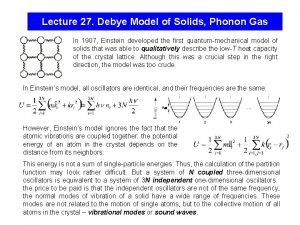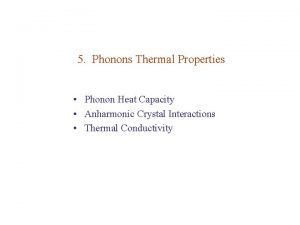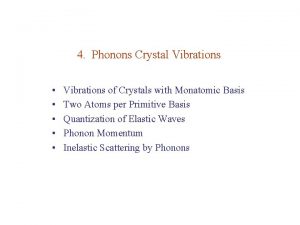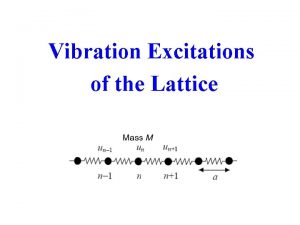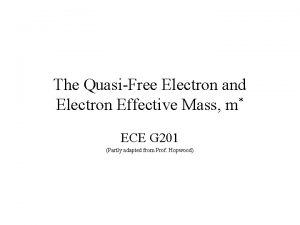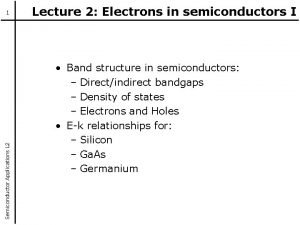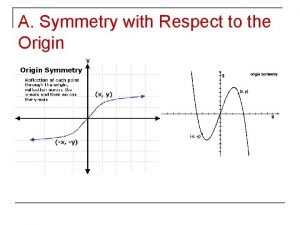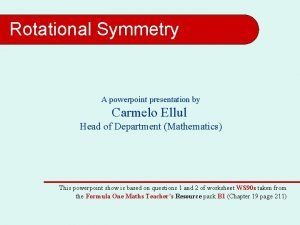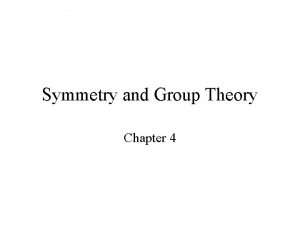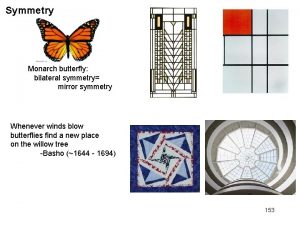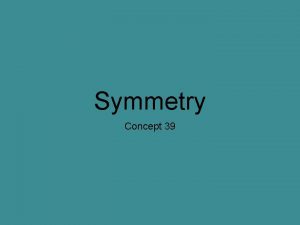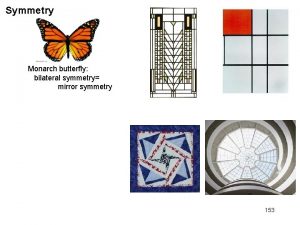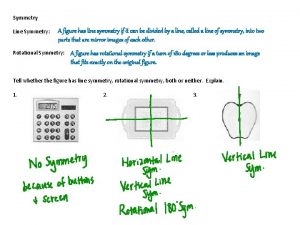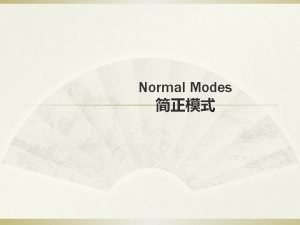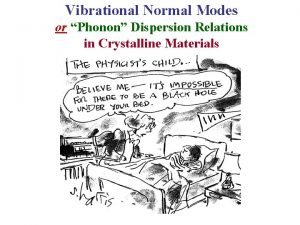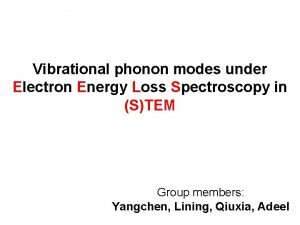Linking space group symmetry with phonon modes in


















- Slides: 18

Linking space group symmetry with phonon modes in calcite and dolomite spectra Craig P. Marshall 1, 2 Andrew Farinella 1 William Dufresne 1 Carson Rufledt 1 1 University of Kansas Dept. Geology 2 University of Kansas Dept. Chemistry cpmarshall@ku. edu Perrin et al. (2016)

Impetus: Overall, the Raman spectra of calcite- and dolomite-group minerals are poorly understood, and hence poorly interpreted! However, recently, Raman spectroscopy has been used to successfully discriminate between carbonate minerals of calcite structure (Dufresne, Rufledt, Marshall, 2018) https: //onlinelibrary. wiley. com/doi/10. 1002/jrs. 5481

In particular:

Importance: Fun problem in solid-state physics Resolve the controversy of low temperature dolomite formation by the unequivocal identification of dolomite Increased porosity when limestone is converted to dolomite (porosity zones)

Identified as dolomite by the 1 band at 1093 cm-1. But, the A 1 g mode for magnesite occurs at 1093 cm-1. And, the 1 band (Ag) for dolomite is at 1098 cm-1!

Identifying a compound by the presence of only one Raman band is poor spectroscopic practice!

And so on …………. So, the big question, can Raman spectroscopy be used to discriminate between dolomite and calcite? And if so, how?

Gregg et al. (2015)

Raman active modes: 1 A 1 g and 4 Eg phonons = 5 phonons Raman active modes: 4 Ag and 4 Eg phonons = 8 phonons


Eg Calcite Eg Eg Eg Dolomite Eg Eg Ag Ag

A 1 g Calcite Eg Ag Ag A 1 g + Eg Dolomite Eg Ag + Eg

Determination of symmetry modes experimentally The elements of the polarizability tensor depend of the mode of phonon symmetry, e. g. , A, B, E, F

Selection Rules – C 3 i point group Where, a, b, c, and d are independent tensor elements

Collection of polarized spectra – Porto notation: Z {0001} surface {1014} face Single-crystal translation and rotation X Y Z Y X Laboratory Axes Y(XX)Y Y(XZ)Y {1101} face Y(ZX)Y {0111} face Y(ZZ)Y

Measurements to assign the symmetry of the additional modes

A 1 g + Eg Eg A 1 g Eg (external Eg modes > relative intensity) Porto et al. (1966)

Where to ……. . Firstly, we do indeed show a spectral difference Between calcite and dolomite group minerals Next, we will conduct polarized Raman scattering measurements on high quality optical grade single-crystals of dolomite, to determine the symmetry and origin of the additional phonons We acknowledge funding from KICC and the KU General Research Fund (GRF)
 Wang xiaomin
Wang xiaomin Phonon hall effect
Phonon hall effect Debye model of solids
Debye model of solids Phonon heat capacity
Phonon heat capacity Phonon momentum
Phonon momentum Phonon momentum
Phonon momentum Fexedx
Fexedx Phonon momentum
Phonon momentum When is a function symmetric with respect to the origin
When is a function symmetric with respect to the origin Symmetry ppt download
Symmetry ppt download Chapter 4 symmetry and group theory
Chapter 4 symmetry and group theory Planes of reflection
Planes of reflection Cartesian space trajectory planning
Cartesian space trajectory planning Space junk the space age began
Space junk the space age began Camera space to world space
Camera space to world space Unscented trajectory chapter 5
Unscented trajectory chapter 5 Ndc to screen space
Ndc to screen space Pbcn space group
Pbcn space group Psychology chapter 13
Psychology chapter 13


